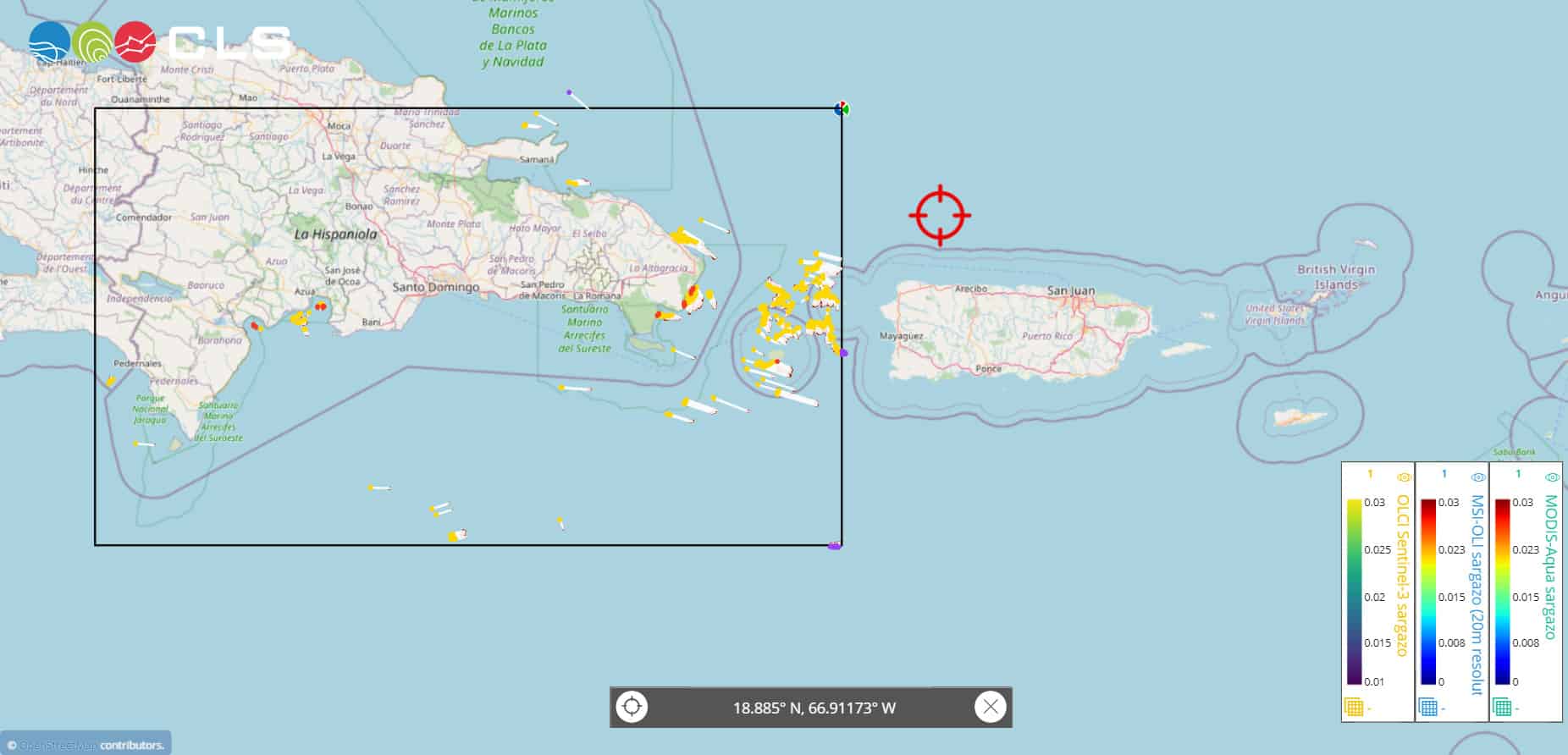Dominican Republic acquires satellite system to monitor sargassum

In recent years the Dominican Republic and the Caribbean region have felt a significant increase in sargassum, directly affecting tourism and other economic activities, including energy generation.
For this reason, the National Authority for Maritime Affairs DR (Anamar) recently acquired a satellite service for detecting and monitoring sargassum in open waters from the French company CLS, a pioneer in the provision of surveillance and control solutions for the Earth since 1986. In addition, the company is the exclusive provider of the environmental data of the renowned Argos system.
Jimmy García Saviñón, director of Anamar, said that “with this what we try is to have a period of time, which serves as a warning to hoteliers and state institutions that have to do with the issue, to know the approximate amount and the address that sargassum has, where on our coasts it will arrive. “
According to Diario Libre, he explained that this system would cost the State 12,000 euros per year, which will be implemented on the Anamar website for consultation of interested parties soon.
Saviñon revealed that this is the first satellite detection system operating in the Dominican Republic.
For his part, Anamar technician Omar Shamir Reynoso indicated that the system works through remote sensing with several satellites that capture images with a resolution of up to 20 meters on the sea surface.
“By the spectral signature of the algae on the surface, they (the satellites), detect it and it is interpreted on a map,” he added.
He reported that sargassum is detectable by the system up to one kilometer from the coast since when it is close, the system makes noise with coastal marine vegetation.
“The system is updated every four hours, when one of the eight satellites passes through the forecast zone, taking into account that cloudiness interferes with the detection of sargassum,” he said.
In addition, he said that with the system, the movement of sargassum could be tracked from the “infection” zone in the Amazon region, which represents between 70 to 75 days before the arrival of the macroalgae in the country.


















Knowing where the sargassum is fine. The real issue is what is being done to prevent the algae from covering beaches and clogging water intakes for power plants and other industries. There has to be an investment in tools, manpower, and financing to defend against a sargassum assault. Can we expect affected enterprises crying for government subsidies to help them battle the algae?